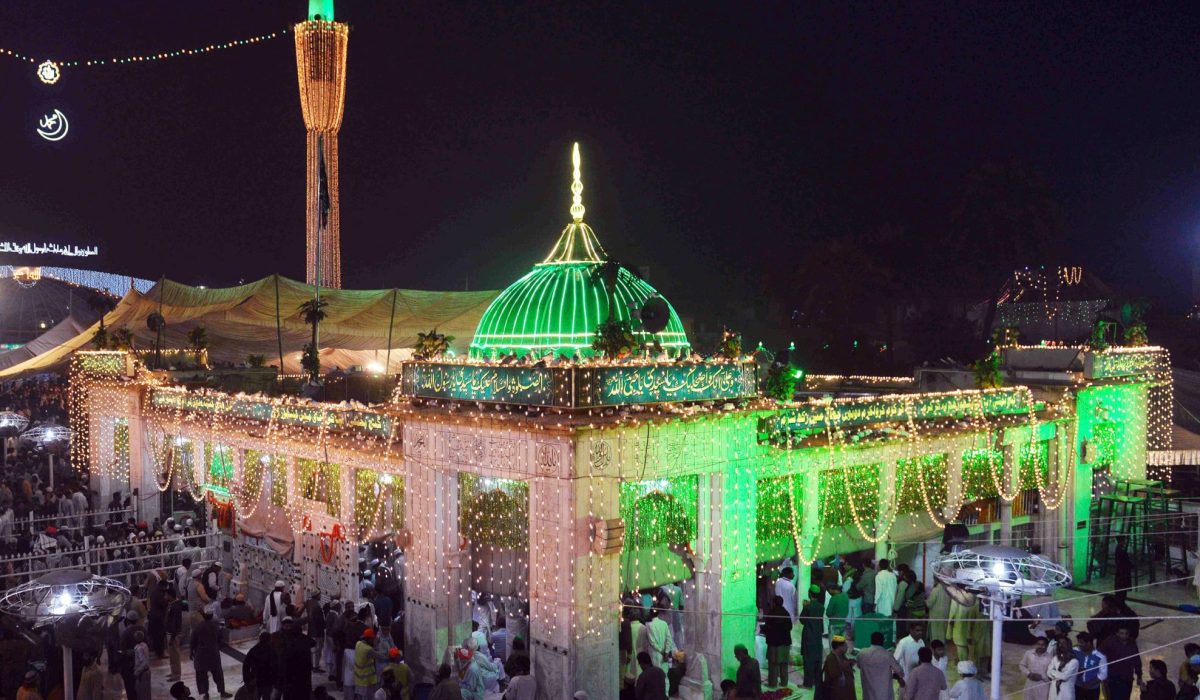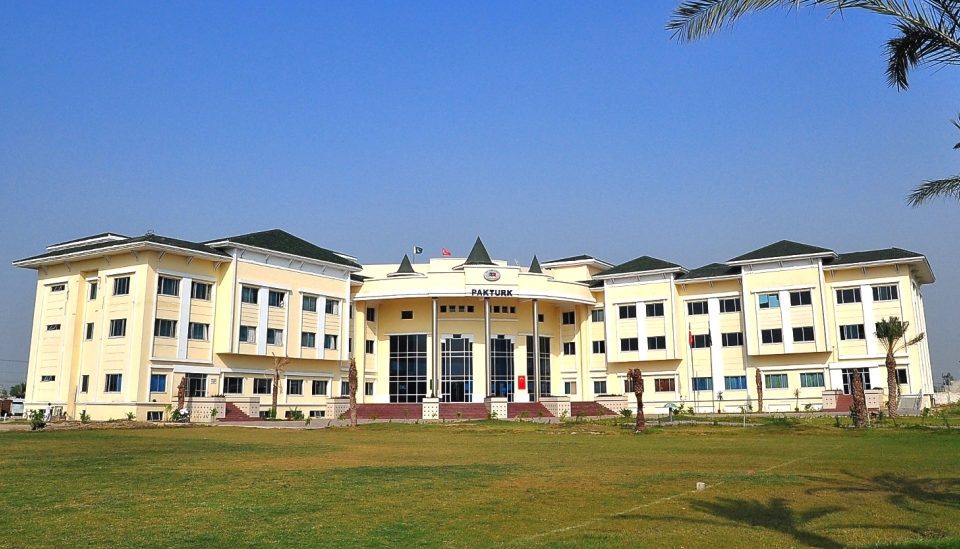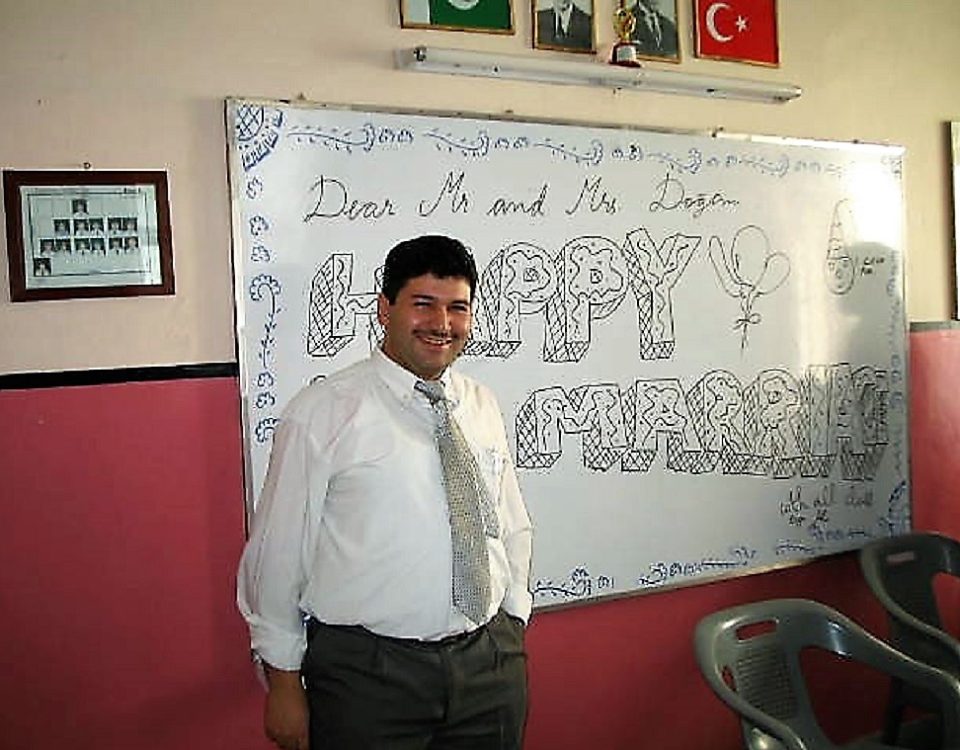Imam Hujwiri: The venerated guest of Lahore who spread Islam in the Subcontinent

Kimse Yok Mu’s flood relief and a meeting with the Punjab Chief Minister
February 20, 2022
Educationist Fatma Esra Tosun (4): The people of Pakistan stood for us in times of happiness and sorrow
February 24, 2022Researcher Doğan Yücel wrote about the Ghaznavid Sufi Ali Hujwiri, who has been considered the chief guest of Lahore for 10 centuries, and his visit to the mosque where this venerated Sufi saint’s tomb is located.
While sitting with friends one day in Lahore, we planned to perform the morning prayer in one of the city’s important mosques on every Saturday. On the first Saturday, we visited the Data Darbar, the mosque with the annex where Hazrat Imam Ali Hujwiri is buried. Let’s first see who this blessed person, in whose name a great mosque was built and a university was established, was before continuing our story.
One of the most well-known personalities among Lahore’s cherished guests is undoubtedly Imam Hujwiri, who passed away ten centuries ago. His alias is Abu’l-Hasen and his full name is Ali ibn Uthman ibn Sayyid Ali ibn Abdur Rahman al-Jullabi al-Hujwiri al-Ghaznawi. He is best known as Ali Hujwiri (or al-Hujwiri) and reverently addressed as Data Ganj Bakhsh. He was born in Ghazni in 400 AH (1009 AD) during the reign of Sultan Mahmud of Ghazni. He is a Sufi, jurist and preacher who settled in the newly conquered region from Afghanistan in the 11th century AD. He is the author of the famous Kashf al-Mahjub, a book accepted as the oldest known treatise on Sufism written in Persian.
Among the pioneers who spread Islam in the Subcontinent
Ali Hujwiri, who was originally from Ghazni, visited the lands of the Ghaznavid Empire and delivered lectures. After living in Baghdad for a while, he settled in Lahore in 431 AH and contributed significantly to the spread of Islam in the region with his efforts. According to historical accounts, he built a mosque in the city and taught hadith and tafsir day and night. He became one of the well-known Sufi saints in the region and compiled Kashf al-Mahjub in the last years of his life. He died in Lahore in 1072 and interred as one of the city’s cherished guests. He is recognized as one of the most important figures who spread Islam in the Subcontinent.
He wrote nine books including Kashf al-Mahjub. This work written in Persian is the oldest known treatise on Sufism. It presents an introduction to various aspects of Sunni Sufism and also includes biographies of the great saints of Islam up to that period. Kashf al-Mahjub is the only surviving work of Ali Hujwiri. Egyptian Sufi Abu-l Azam translated this book into Arabic. Süleyman Uludağ translated the book into Turkish in 1982. In addition, there are quite a few studies on this work both in Turkey and Pakistan, such as Saruhan’s article in 2018 and Shah’s article in 2007. There are also scientific studies on this work in other Islamic countries.
Considered the chief guest of Lahore
Kashf al-Mahjub’s translator Reynold Alleyne Nicholson also published a list of other works by Ali Hujwiri:
- Diwan: Hujwiri’s poems.
- Minhaj-ud-Din: The lives of the Companions; and a complete biography of the 10th-century Sufi and martyr Mansur al-Khallaj (d. 922).
- Asrar-ul-Hiraq wa’l-Ma’unat: A compilation on the woollen patched clothes worn by the Sufi of his time.
- An anonymous work that explains the meaning of the mystical words of Mansur al-Khallaj.
- Kitab-ul-Bayan li-Ahl-ul-‘Iyan: Sufi interpretation of the concept of Fanafillah.
- Kashf ul-Asrar: A short Persian treatise on Sufism, translated by Ash-Sheikh Sayyid Mubarak Ali Shah al-Jilani with in-depth commentary.
Today, Hazrat Imam Ali Hujwiri continues to be revered by the Muslims of the region as the chief guest of Lahore. He is almost one of the most respected Sufis and saints in South Asia. Known as the Data Darbar, his tomb is one of the most visited tombs and shrines in South Asia by Sufis. It is the largest shrine in Pakistan in terms of annual visitors and size of complex and was expropriated in 1960. It is administered by the Punjab Department of Auqaf and Religious Affairs. In 2016, the Pakistani government declared November 21 a public holiday to commemorate the beginning of the three-day anniversary of Ali Hujwiri’s death.
As with almost most of the great Sufis, his lineage was directly traced to the Holy Prophet (peace and blessings be upon him) by his father linked to Hazrat Hasan (may Allah be pleased with him) and Hazrat Ali (may Allah be pleased with him). He is the eighth-generation grandson of Hazrat Ali (may Allah be pleased with him). According to the autobiographical information in Kashf al-Mahjub, Hujwiri travelled through the Ghaznavid Empire and beyond, spending considerable time in Baghdad, Nishapur and Damascus and meeting many prominent people. He studied Hanafi and Sunni jurisprudence from several scholars. It is reported that his Sufi affiliation is based on al-Husri, Abu Bakr Shibli (d. 946) and Junaid al- Baghdadi (d. 910) through his teacher Huttali. It is believed that he also got married during the sojourn he spent in Iraq. Khawaja Gharib Nawaz had the following Persian couplet engraved on Ali Hujwiri’s tombstone:
گنج بخش فیضِ عالَم مظہرِنورِ خدا
ناقصاں را پیرِ کامل ، کاملاں را راہنما
“Treasure of the grace of the world, radiant of the Almighty
Perfect guide for the imperfect, all-perfect guide”
A ‘blind’ beggar grabbed my arm
If we go back to the story, after taking the decision, we as four friends went to the morning prayer on the first Saturday. We parked the car in the lot under the mosque. Two of the friends were wearing slippers and one was wearing shoes. Those who came with slippers returned with their own slippers, and one who came his pair of shoes returned home with a pair of slippers he bought on the way out. I too was wearing shoes, but I did not want to return with slippers. So, I put my shoes in a bag. After the prayer, someone asked why I entered the mosque with shoes. I said, “The shoes have not been on my feet. As you can see, I hold them!” We bickered after that. Someone immediately stepped in and pulled me away.
A ‘blind’ beggar approached and asked for money. When I gave nothing, he grabbed my arm. I had guessed he had not been blind, and he certified my guess. Inside were at least 5,000 people who spent the night on the marble floor. All were from different villages of Punjab working in the shops around. They would sleep there to save from rent. They sleep on the marble floor every night with a sheet over them and a small pillow under their heads.
After the prayer, we recited Surah al-Fatiha in front of the tomb before leaving the shrine. Those who wish to do charity come in the morning and distribute food to the caretakers of the tomb. Former Mayor of Ankara Vedat Dalokay, also the architect of the Faisal Mosque in Islamabad, drew the project of the Data Darbar mosque.
Sources:
- Shah, M. S. (2007). A Study of the English Translations of Kashf al-Mahjub. Oriental College Magazine, 83(307-308), 3-14.
- Uludağ, S. (1982). Keşfu’l Mahcub, Hakikat Bilgisi. Istanbul.
- Saruhan, M. S. (2018). Value of Knowledge in Sayyed ‘Ali bin ‘Usman Al-Hujwiri. Akademiar Dergisi, 4,65-83.
- Hujwiri (2007). Kashf al-Mahjub, (trans. R. A. Nicholson), Sang-e-Meel Publications.





No Comment.